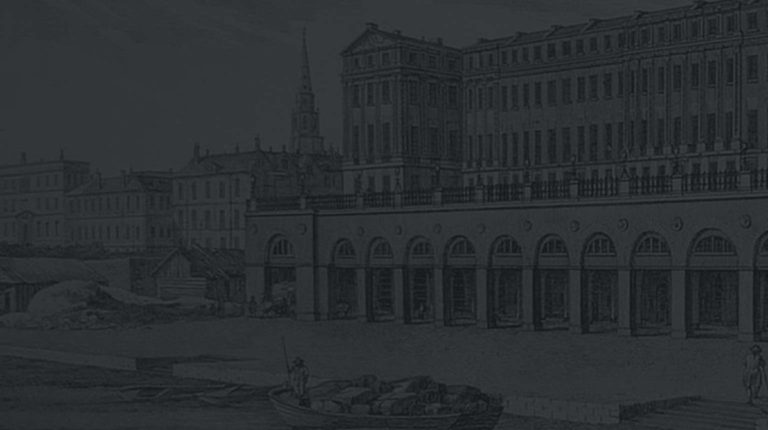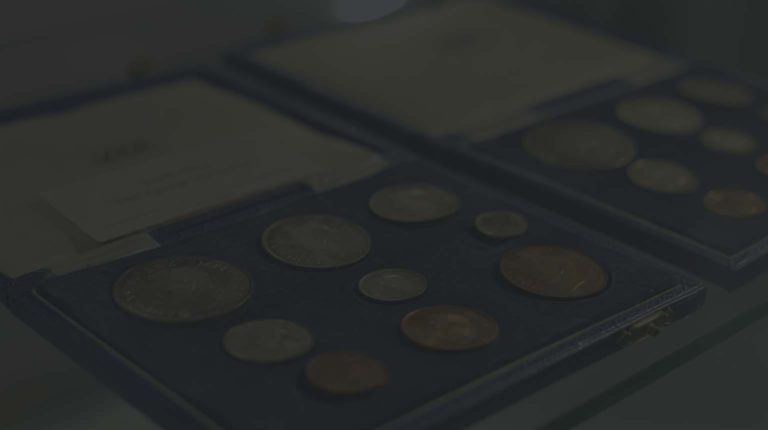A H Baldwin & Sons Ltd are delighted to present their 100th and 101st London Auctions, to be held at our London Saleroom at 399 Strand on 27-28 September 2016, during the weekend of the International Coinex Fair.
These auctions mark a significant milestone in Baldwin’s Auctions history. It was over 23 years ago that the first ever Baldwin’s auction was held. Back then, the catalogue featured just a handful of images, and lots were pulled together from the vast Baldwin’s basement and a handful of nervous yet enthusiastic consignors.
More than two decades later and Baldwin’s Auctions are renowned the world over, with annual auctions in the Far East and USA, along with specialist sales having been held in Singapore and Dubai. After a highly successful sale in Hong Kong last month, the team is now back on home turf and ready for what promises to be amongst the most important sales we have ever held.
The 2-day sale features estimates in the region of £1.5M (quite an increase from 23 years ago) and is split into a magnificent series of Ancient Coins on day one, followed by World Coins, Commemorative Medals and a superb selection of Military Medals on day two.
The first ever Baldwin’s catalogue was weighted heavily towards Ancient Greek and Roman coins, and it is therefore fitting that Auction 100 features the same. As well as Roman, Greek and Byzantine coins, the auction includes the fourth and final instalment of The David Sellwood Collection of Parthian Coins.
Parts one, two and three were sold at previous auctions in London, and this incredible collection will finally come to a conclusion at Auction 100.
David Grenville John Sellwood was born in 1925 and became interested in coins as a child. During WWII his family moved from London to Wales, and he could often be found riding his bicycle from Welshpool to Shrewsbury to visit a favoured coin dealer there. It was a round trip of some forty miles, indicating his deep-rooted enthusiasm even at such a tender age.
By the 1950’s his collecting had become even more serious, and he became fascinated by the ancient world. He first started collecting Parthian Coins because the series was less well-known than the Greek and Roman series and therefore more affordable.
David Sellwood passed away in April 2012, leaving behind a magnificent collection acquired over sixty years of pragmatism and dedication.
 Lot 354 – From the David Sellwood Collection
Lot 354 – From the David Sellwood Collection
Mithradates I (163-132 BC), Silver Drachm, minted at Seleucia on the Tigris, 3.16g.
About very fine, extremely rare.
Estimate: £400-500

Lot 380 – From the David Sellwood Collection
Phraates III (70/69-58/7 BC), Silver Drachm, issued by travelling court mint at Exbatana c.62 BC, 3.02g.
About very fine – one of only two known examples, with the other housed in the British Museum.
Estimate: £350-400

Lot 567 – Ancient Roman
Augustus (27 BC – AD 14), Gold Aureus, Mint of Lugdunum, struck 2 BC – AD 4.
With full legends, good very fine.
Estimate: £8,000-10,000

Lot 432 – Ancient Roman
Anonymous (c.211-206) Silver Denarius, 4.24g.
Very fine and very rare.
Estimate: £1,500-2,000

Lot 187 – Ancient Greek
Thraco-Macedonia Tribes, The Derrones (c.520-500 BC), Silver Tetradrachm, 13.54g.
Struck on a very broad flan, toned, very fine and exceedingly rare with only two other recorded examples.
Estimate: £6,000-8,000
(ex Prospero Collection)

Lot 236 – Ancient Greek
Mysia, Kyzikos (c.500-450 BC), Electrum Stater, 15.83g.
Very fine, toned, very rare.
Estimate: £6,500-7,000
(ex Prospero Collection)
Auction 100 also features a selection of British and Continental Celtic coins, along with a wonderful section of Romano-British Coins.
In AD 43, Roman troops arrived into what would become Great Britain from the Germanic Provinces during the reign of Emperor Claudius. The Province of Britannia was formed, eventually covering all of England, Wales and parts of Scotland. The period saw a turning point in British history, as whilst the populace remained primarily Celtic, the Roman way of life was adopted. Many thousands of wealthy Roman businessmen made Britannia their home, and of course, coinage was produced to accompany the economic boom that this entailed:
 Lot 893 – Romano-British
Lot 893 – Romano-British
Allectus (AD 293-296), AE Antoninianus, mint of Londoninium, 2.66g.
Dark green patina, very fine and apparently unique.
Estimate: £300-400

Lot 930 – Roman British
Constantius II (AD 337-361), Gold Solidus, mint of Antioch, struck AD 347-55.
Fine style, good very fine to nearly extremely fine.
Estimate: £1,200-1,500
Another key section in Auction 100 is the Collection of a Classicist (Part III). Parts one and two were sold at our May and June Auctions in London to some aplomb – an extensive collection to say the least, it features material from the Ancient Greek, Roman and Byzantine worlds, with a particular focus on Roman coinage. The pervasive popularity of this series is testament to the fact that so much of this material is fresh on the market after many years.
 Lot 1072 – From The Collection of a Classicist
Lot 1072 – From The Collection of a Classicist
Valentinian III (AD 425-455), Gold Solidus, mint of Mediolanum, struck AD 430-55.
Very fine and rare.
Estimate: £400-500

Lot 1069 – From The Collection of a Classicist
Eugenius (AD 392-394), Silver Siliqua, mint of Lugdunum.
Broad flan, extremely fine, scarce.
Estimate: £400-500
Day two, Auction 101, begins with a series of British coins through the ages, starting with the Anglo-Saxon period right up to Queen Victoria, along with a series of Irish and Scottish coins.
 Lot 3200 – Great Britain
Lot 3200 – Great Britain
James I (1603-1625) Gold Angel of Eleven Shillings, second coinage (1604-1619)
Pleasing red tone, bold very fine, a rare example of an unpierced Angel.
Estimate: £4,000-5,000

Lot 3242 – Great Britain
Charles I, Civil War Siege Coinage, Carlisle, Silver Shilling, 1645
Fine, extremely rare.
Estimate: £12,000-15,000

Lot 3211 – Great Britain
Charles I (1625-1649) Gold Triple Unite of Three Pounds, 1642, Oxford Mint
A good clear face to portrait and sword blade, good very fine with a light tone.
Estimate: £50,000-70,000
The World Coins section takes us away from these shores, and includes an extensive selection of Islamic and Indian Coins. Of particular note (and of huge historical significance) in this section is the Abassid al-Mu’tazz Gold Dinar.
 Lot 3480 – Islamic
Lot 3480 – Islamic
Abbasid, al-Mu’tazz (251-255h) Gold Dinar, Makka, 252h, 4.11g.
Very fine and very rare.
Estimate: £70,000-90,000
In 160h / 777 CE the Makam Ibrahim, the stone behind which the Prophet Muhammad prayed when he performed the circumambulation of the Holy Ka’ba and which bears the foorprints of the Prophet Ibrahim impressed into its surface, was brought to the abode of al-Mahdi in Makka when he performed the pilgrimage. The next year, the makam was dropped by one of its keepers and cracked. It was repaired on the order of al-Mahdi and its upper and lower parts were braced with gold. In 252h / 866 CE the makam was stripped of its gold, which was subsequently melted down for minting Dinars.
The gold used for the minting of this Dinar was taken directly from the Makam Ibrahim.
The ever-celebrated Commemorative Medals section similarly features some key items. Commemorative Medals have always been regarded as a niche area of numismatics, but for the historians amongst us they can often tell a far more specific story about the time period they were created for. Whilst a coin minted at the time of a revolution or a war or the crowning of a new Monarch can tell its own tale of that time, the Commemorative Medal can often pin-point the exact event or precise circumstance.
 Lot 3653 – Commemorative Medals
Lot 3653 – Commemorative Medals
Cambridge University, William Browne Prize for Classical Odes and Epigrams, Gold Medal by Lewis Pingo, first struck 1755 and awarded in 1904 to John Fraser.
Nearly extremely fine.
Estimate: £800-1,000
A prime example of this is the above – the William Browne Prize for Classical Odes and Epigrams Gold Medal. It was awarded in 1904 to John Fraser, who at the time was a student at Trinity College, Cambridge. He would later go on to work at Bletchley Park during WWII – a vocation that was no doubt as magnificent as the medal (and arguably more rewarding than writing Classical Odes and Epigrams).
Auction 101 also features a major section of Military Medals, Orders and Decorations.
The Military Medals speciality area of Baldwin’s has gone from strength to strength in recent times, not least because of the influence of our arms and militaria specialist Mark Smith. Some of the stand-out lots in this section include the Great War DSO Group of 7 awarded to Squadron Leader ‘Tommy’ Lloyd, who was the Intelligence Officer to 617 Squadron – also known colloquially, and more popularly, as the ‘Dambuster Squadron’.
 Lot 3987 – Military Medals
Lot 3987 – Military Medals
The Great War DSO Group of 7 awarded to Squadron Leader ‘Tommy’ Lloyd, Intelligence Officer to ‘Dambuster’ Squadron.
Good very fine.
Estimate: £1,500-2,000

Lot 3998 – Military Medals
The Superb CMG Gallipoli DSO and Rare Archangel Command Albert Medal Group of 8 to Cpt GP Bevan. Housed in a glazed mahogany case.
Extremely fine.
Estimate: £25,000-30,000
Also included is a very rare China 1900 “Conspicuous Gallantry” Medal Group of 3 awarded to Able Seaman William Parsonage of the HMS Aurora for rescuing a wounded officer under fire, and a superb Gallipoli and Archangel Command Group of 8, housed in a wonderful mahogany display case with large framed portrait photograph of the recipient in uniform.
Rounding off the sale on Day two is a fine selection of banknotes, as well as a section on coin cabinets – always important for the growing collection!
As always, Baldwin’s will set the standard for live auction bidding, with the whole two-day sale streamed directly through our website at www.baldwin.co.uk/liveauction.
—ENDS—


